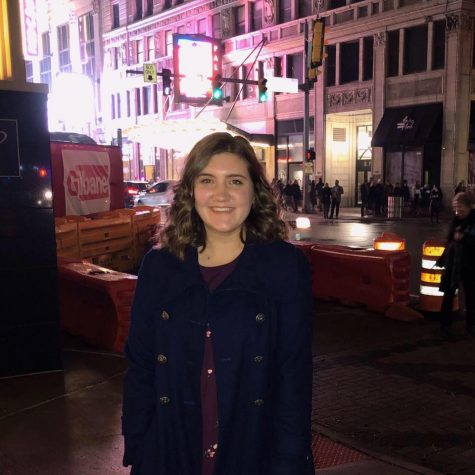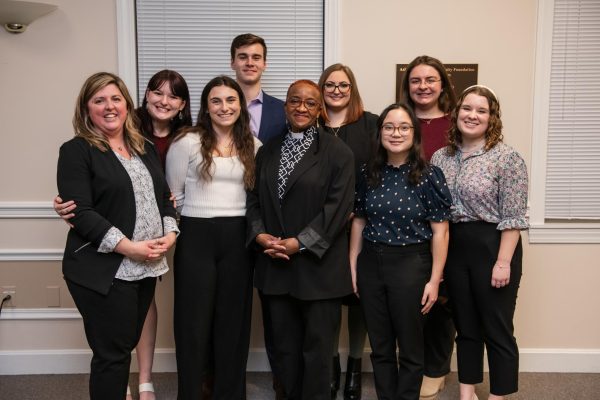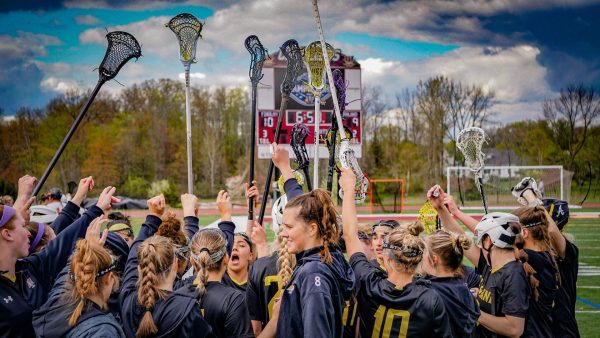Ashland’s clean team
Submitted by: Avaerie Fitzgerald
“As Ashland prepares for Winter break, Ashland University’s nightly cleaning crew is just getting ready for a complete disinfect, hitting every area on campus so that students can make a safe return in the Spring.
December 18, 2020
In the late hours of the night on Ashland University’s campus, many buildings are visited by masked workers dressed in warm clothes and armed with the tools to protect and defend every surface.
The spray bottles that they wield are filled with powerful disinfectants and chemicals specifically designed to kill coronavirus that lays on some surfaces, undetected by the eye, and ready to attack a new host.
Unlike many schools who were unready and unprepared when the pandemic struck, AU’s facilities department has been stocking up on cleaning materials and arming themselves for the massive clean movement since last year.
With those materials, facilities has focused effort and time in developing a strategy for combating the novel virus, Covid-19, which has caused a panic within the United States. This strategy is a product of Peggy Kohler, facilities director and CARE team member, who had prepared for the excess cleaning products ahead of time.
The strategy for the beginning of the school year in August took months of planning and research.
“Covid-19 meetings began within the department in February,” Kohler said. “When campus officially closed in March, we scheduled a few staff members to continue disinfecting buildings that still occupied students or staff.”
Early in the year, trying to figure out how to cover all surfaces in the academic buildings was a true challenge, Kohler said.
The cleaning staff did not gain any new staff members, but ended up losing workers along the way due to other job offers. Facilities hopes to hire more staff members to replenish areas where they may be lacking.
As of a result of these losses, there was not enough cleaning staff to clean after every class, so Kohler looked elsewhere for ideas.
“I wondered what other big schools were doing in light of the virus within the academic buildings, and after research, I noticed that a few of them had relied on staff members to step up and volunteer,” Kohler said.
She used that idea and spun it so that everyone was participating in the clean movement.
“Faculty is relied upon heavily this year to clean the surfaces in each classroom after use,” she said. “But, I didn’t get one complaint from the faculty.”
Even with the faculty members pitching in, the facilities cleaning staff has had work cut out for them as the year has progressed. As of Nov. 24, on campus, the count has risen to 72 active cases, according to the Covid-19 dashboard on AU’s website.
“We have to be proactive instead of reactive,” Kohler said. “We have brave workers report to the school before their night shift every day, ready to clean every surface like it’s in their own home.”
In the materials that were stockpiled, the school is set on hand sanitizer and disinfectant while constantly collecting more materials to ensure healthy and safety remains a possibility.
Qualified with the CDC to combat Covid-19, the facilities director chose to purchase a disinfectant spray with faster kill-time to give everyone a greater peace of mind. The original spray that was used by AU for cleaning also worked against Covid-19, but was not as efficient.
“I developed check-lists that hung on every door, the employees had to sign off on it. Building service staff did all the major cleaning, supervisory came in and did all of the major disinfecting, and then the last step was cleaning and disinfecting all of the hard floor surfaces and sanitizing carpets,” she said.
Cleaning will still be running full force, even after Thanksgiving break.
With less students and staff members on campus, there is still a big safety concern since there is no guarantee every building will be clear of individuals.
One of the new advancements that the cleaning crew gained this year was a high-powered cleaner called an electrostatic sprayer, which allows staff to clean bigger areas in less time. This equipment matches the level of technology that the White House has been using to combat the virus.
Penny Weber, a building staff member on the night shift, said that she often gets a headache from the fumes that come from the sprayer.
“We use the electrostatic sprayers in the Rec Center, Troop [Center], Facilities and a few more large-scale places,” Weber said. “It’s a little time consuming. We still go around and do cleaning, but we do disinfecting as far as nightly.”
The sprayer is used each night in every major building by a member of the clean team, and the area has to be clear of people for 10 to 15 minutes because of the fumes and fallout from the chemicals. This routine requires the operator of the electrostatic sprayer to wear a N95 mask and face shields to protect themselves from the smells as well.
As for the high-touch areas like door handles, handrails, bathrooms and classroom desks, these now get cleaned more than once a day. Weber added that there is a lot more focus on disinfecting, rather than cleaning.
Facilities used to collect the trash from classrooms and offices twice a week, but it’s been moved to once a week to preserve time for sanitation.
One of the things that Weber believes to be different is the communication she has with students.
“We don’t see students around campus at night like we used to,” Weber said. “I used to enjoy going to clean the library on the night shift because the Ashbrook students were very kind and I loved talking to them, but there are only a few that are up there that late now.”
Through all the changes that the university has undergone this semester, both Weber and Kohler admit that the students, staff and faculty have been great with change.
“I think it’s a great process, it’s working out well,” Kohler said. “We haven’t run out of quarantine or isolation spaces on campus.”
The plan now continues in full motion as Kohler reviews and evaluates the practices every day to ensure the team is providing the best disinfecting procedures.













